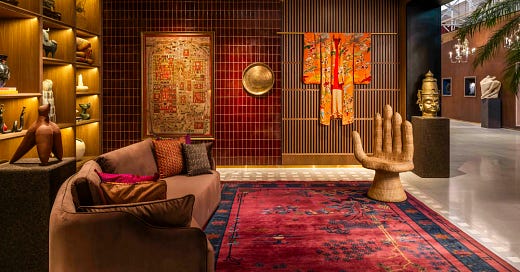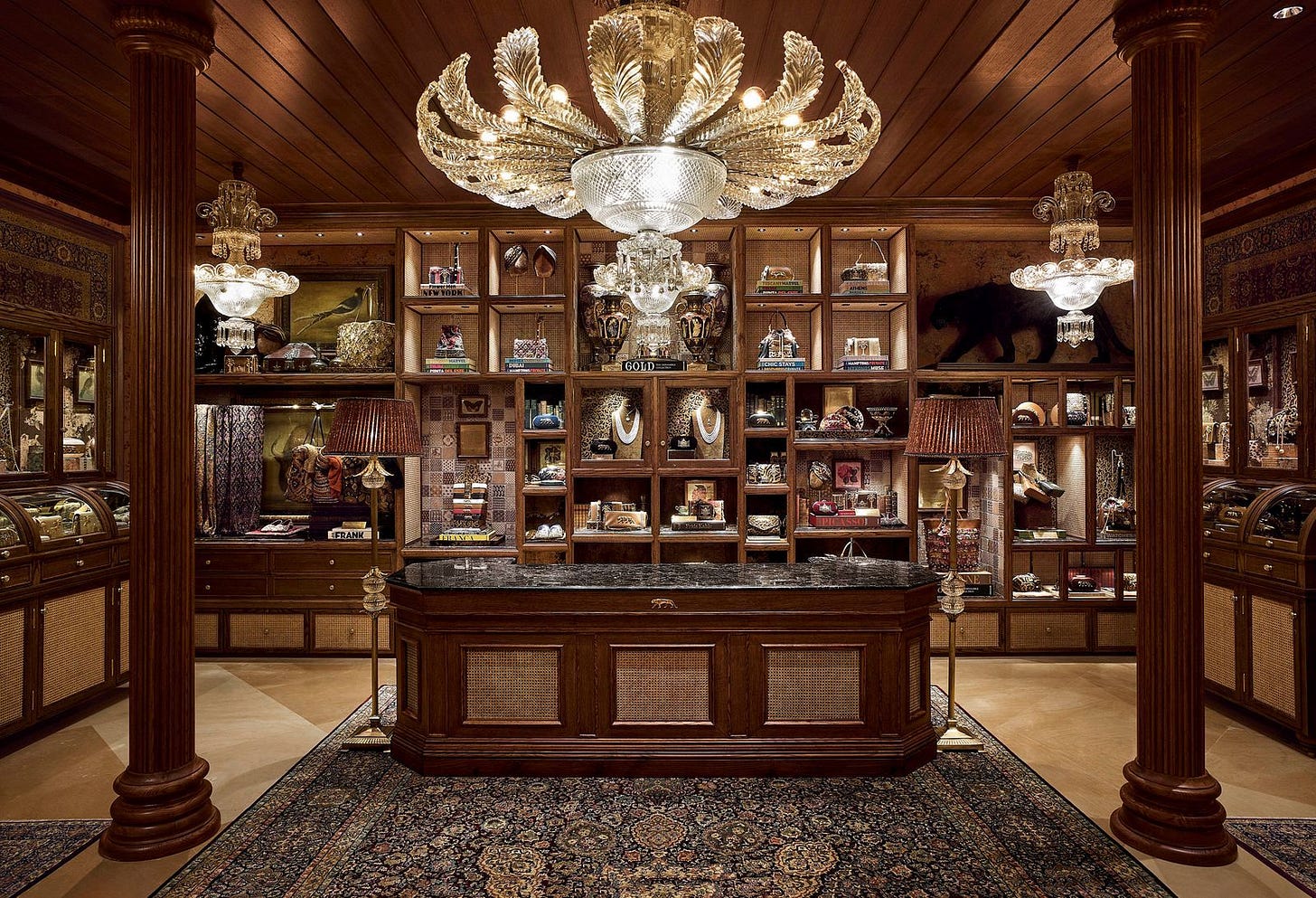The bustle overwhelms. The incessant beeping of horns from 7 am until 1 am from Tuktuks and taxis jockeying for angles on roads where lane markers are suggestions to be ignored outright. Floating its way through the traffic is the waft of streetside cooking, from stalls or from open fires, on sidewalks either ripped up for renovation, or about to be.
And yet the cars and the smells, the hustle and the noise reveal — after a time — patterns and systems: supply and demand and labor organized in streams (from my experience efficiently). Traffic miraculously moves when street signs and red lights are ignored. A lane of outdoor stalls with printers and copy machines in the fashionable Kala Ghoda neighborhood means that you can get anything printed at any size quickly, helpful for last minute needs during our recent workshop there.
A new client brought us from Amsterdam to the Indian metropolis (so beautifully rendered in Suketo Mehta’s Maximum City). The client had built up a successful luxury business on the strengths of his knowledge of craft and supply, and his exacting standards in service and quality. But what he needed to differentiate himself in a marketplace teeming with competitors was an aspirational brand.
The timing felt right. Before I boarded the Swiss flight to Mumbai, I listened to Business of Fashion’s Imran Amed interview Sabyasachi, India’s greatest luxury export. The mood was giddy and optimistic. Amed’s publication had just released a report on the rise of the global south as Western luxury brands falter. Some eyebrow-raising facts related to India:
People under the age of 35 make up 66% of the population
There are 430 million people in India’s middle class — greater than the middle classes of the US and Western Europe combined. It is expected to reach 1 billion by 2050, largely from tier-two and -three cities
I bring this up not to talk about opportunities for brands from Europe and America, but the potential of home-grown brands to cater to a changing class of Indian consumer.
In the air-conditioned cool of Bandra’s cafes and shops, we spoke to women entrepreneurs upending narratives and wielding their own consumer clout. Tech talent that once fled to Silicon Valley is staying home: because of an inhospitable America, yes, but also because of the opportunities a more stable tax system and investment climate at home have created.
I had one of the best meals of recent memory at the Bombay Canteen one night, helmed by two friends who met while studying at Cornell University. Around the restaurant, commercial and residential towers shot up into the sky. The contrast to the English Gothic and Victorian spires to Fort and Colaba in the southern side of the city couldn’t be greater — and yet all share a feeling of coherence. Modern Bombay is being built outward, but also inward.
Behind facades that look (at best) aged or held up by some clever application of brick and mortar, entire worlds can sometimes unfurl. And the ceremony of entering some of these restaurants or retail spaces is only enhanced with the outside world so frenetic.
Experiential is the current buzzword of a marketing class that seeks to trade in the rising costs and wastes of media buying for footprints that enable them a more reliable, emotional connection to their audience. Call them by their (other) names — branded experiences, branded events — and they still rarely deliver or immerse.
The best aren’t an expression of a brand, but rooted in the company’s unique differentiation, the “mission critical core” as friend-of-the-letter Matt Hirst often puts it. That’s why Kith works, but Niketown doesn’t.
Of course, then there’s the two we saw in Mumbai last week.
Nilaya Anthology 👘 From a street where a few idle cows mingled with food sellers, we turned past a guard gate manned by a mildly interested sentry into a vast, empty parking lot. Across the other side rose a two story building designed with contemporary intent. We walked inside through two massive oak doors past a fragrant interior garden where lime soda waited on a tray and Italian outdoor furniture positioned just so, invited us to pause. This is Nilaya Anthology, an interiors showroom that feels like a gallery and tells tales like a bookshop. Subtle guides in cream colored uniforms cotton on to you as you move through the 100,000 square-foot space. They tell the stories. Each piece has one, from the handwoven trays by different tribes in Gujarat, to the Dutch ribbed glassware, to scarves woven by group effort in Kashmir. The inventory balance between homegrown and European pieces is intentional, and ever-shifting. But the intention is clear: the best of Indian craftsmanship deserves a setting that emphasizes experience as much as value.
“What we are missing in India, and I think everywhere in the world, are places which are not about consumption but about experience, understanding and beauty.” Anthology Design Director Pavitra Rajaram in this interview.
Every piece is for sale, of course, but there’s no one stopping you from treating Anthology like a museum visit (and you should), where you can while away a couple of hours looking at painted silks in the gallery, learn about the provenance of artfully spun ceramics, or have coffee in the soon-to-appear restaurant and cafe. Many brands (including my previous employer Apple) have tried to create “third spaces” where product and community mix. But rarely do those places invite you to linger and not buy. Nilaya Anthology might have just pulled it off.
Sabyasachi 🏛️ It is both a testament to his world-building talent and a comment on the slow rise of Indian fashion that for the last 25 years Sabyasachi Mukherjee has been the first and last word in Indian fashion. Beginning with eye-catching wedding saris, the Calcutta-born designer has ready-to-wear, accessories and jewelry lines that stretch across all seasons and occasions. He’s been embraced, then rebuffed, then once again embraced (on his own terms) by the West, and his New York City store sells looks I wish I had the courage to pull off.
We’re not here to talk about my sartorial shortcomings, of course, but the transformative experience of his store in Mumbai. Housed in a former bank building across four floors, the windows to the street are shuttered intentionally: there will be no distractions in this world, because the Sabyasachi world is complete. You enter and then pass through three door frames and a repeating collection of stuffed tigers and Ming vases and candelabras. Quiet, attentive attendants in matching black uniforms with bags slung around their back bearing his Bengal tiger logo hover unobtrusively nearby. You enter an elevator manned by a silent operator who brings you up and down the floors. Every moment in this place is choreographed and deliberate. Walls guide you around corners where showrooms open up. Sudden intimate spaces appear behind large curtains, where generous sofas invite you to sit down for a few minutes or hours. There are clothes hung discreetly, but it feels as if you’re ambling around an old mansion — a fantastical remix of Mughal and the British colonial past that is frozen in time. Shelved books — travel and beauty themed in the women’s section, more masculine themes in the men’s — sit next to art pieces collected by Sabyasachi through the years: vintage photography, Mughal miniatures, carved wooden figures, centuries-old silk paintings. My descriptions of the details are woefully inadequate, but give you a sense of just how much he obsesses over them. This isn’t a place to walk in a pick up a trinket, but it is a destination that spins a world you’ll desperately want to be a part of. It’s insanely difficult to pull off for a brand without a clear personality. Ralph Lauren and James Perse (West Coast Ralph Lauren, if you will) come to mind. But I think the lessons every brand can borrow is creating stories out of the details: the artifacts included or excluded, the mix of materials and textures, the art on the wall and the music playing. What are the details visitors will talk about the most?







I love this! Looking forward to more of you in Mumbai soon.